One
EARLY LARCHMONT
Los Angeles was rapidly growing, and real estate was the currency for expansion. Entrepreneurial developers invented idealized neighborhoods from barley fields along Wilshire Boulevard, transforming the landscape with trees and lawns.
Larchmont is nestled inside Windsor Square, which was envisioned by George A.G. Howard as a beautiful, tranquil park for family homes found in the English countryside.
Land records from around 1868 indicate that Canadians John C. and Cecilia Plummer acquired 640 acres for farming purposes. In 1885, during the height of Los Angeles’s first big land boom, a syndicate of real estate investors bought 200 acres of the Plummer property. In 1911, they sold the land to Robert A. Rowan of the Windsor Square Investment Company, which began the subdivision called Windsor Square. The “Square” ran from Wilshire Boulevard to Third Street (later extended to Beverly Boulevard) and from Irving Boulevard to Plymouth Boulevard (later extended to Bronson).
Deed restrictions set a minimum cost of $12,550 on each home to be built in order to assure handsome homes in an exceptionally beautiful setting. Intervening walls or fences were discouraged so that one garden ran into another, creating a parklike setting. Windsor Square was the first area in the city to have power lines below grade, an extraordinary innovation for 1911. The English flavor was enhanced by the street names: Irving, Windsor, and Plymouth.
Nearby Hancock Park owes its name to developer and philanthropist G. Allan Hancock, who subdivided the property in the 1920s. Hancock, born and raised in a home near the La Brea Tar Pits, inherited the 440 acres that his father, Maj. Henry Hancock, had acquired from the Rancho La Brea property owned by the family of José Jorge Rocha. Hancock subdivided the property from Rossmore to Highland Avenues between Wilshire Boulevard and Melrose Avenue into residential lots. He leased 105 acres to the Wilshire Country Club with an option to buy. Hancock also insisted that his master plan include concrete streets and the location of utility lines at the rear of each development, out of sight of homeowners. Another condition was that homeowners build no less than 50 feet from the curb.
Hancock also gave $100,000 to the Los Angeles Railway to extend its tracks west along Third Street (which stopped at Larchmont Boulevard) to La Brea Avenue.
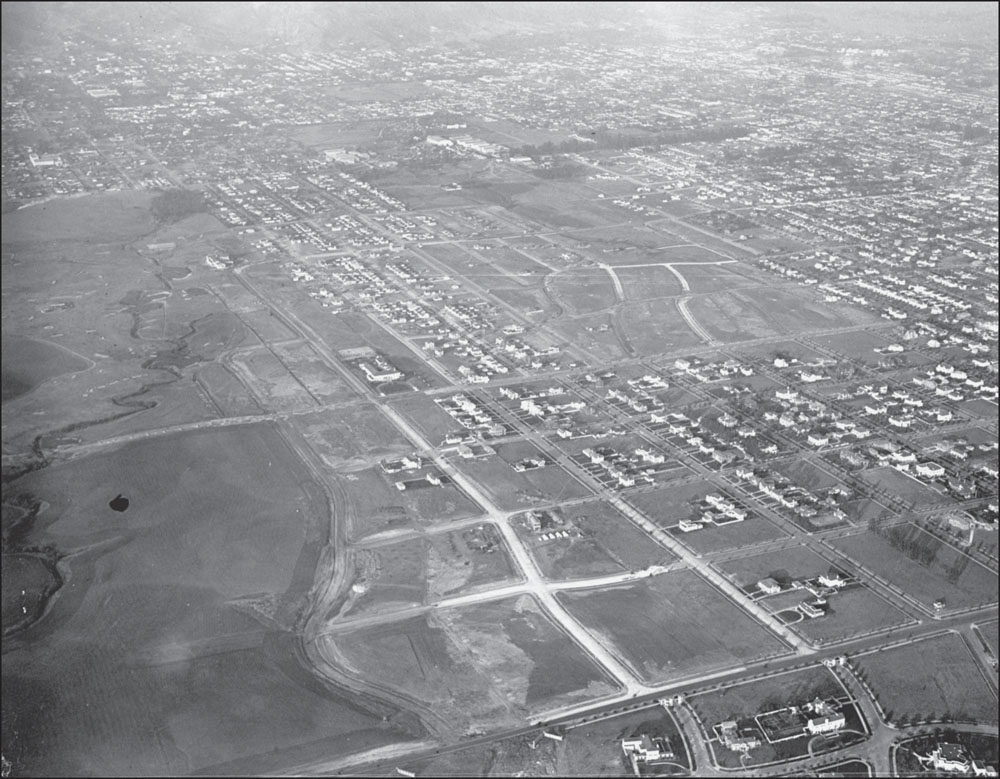
AERIAL VIEW OF LARCHMONT BOULEVARD, 1921. Pictured is Larchmont Boulevard (three streets east of Rossmore Avenue) before any development. East is Windsor Square with its curving streets, and Hancock Park will be developed to the west. Marlborough School on Rossmore is in the center left, and Fremont Place is already landscaped with street trees and entry gates at Rossmore Boulevard and Arden Street. Wilshire Boulevard is shown along the bottom edge. (Courtesy of Marc Wanamaker at Bison Archives.)
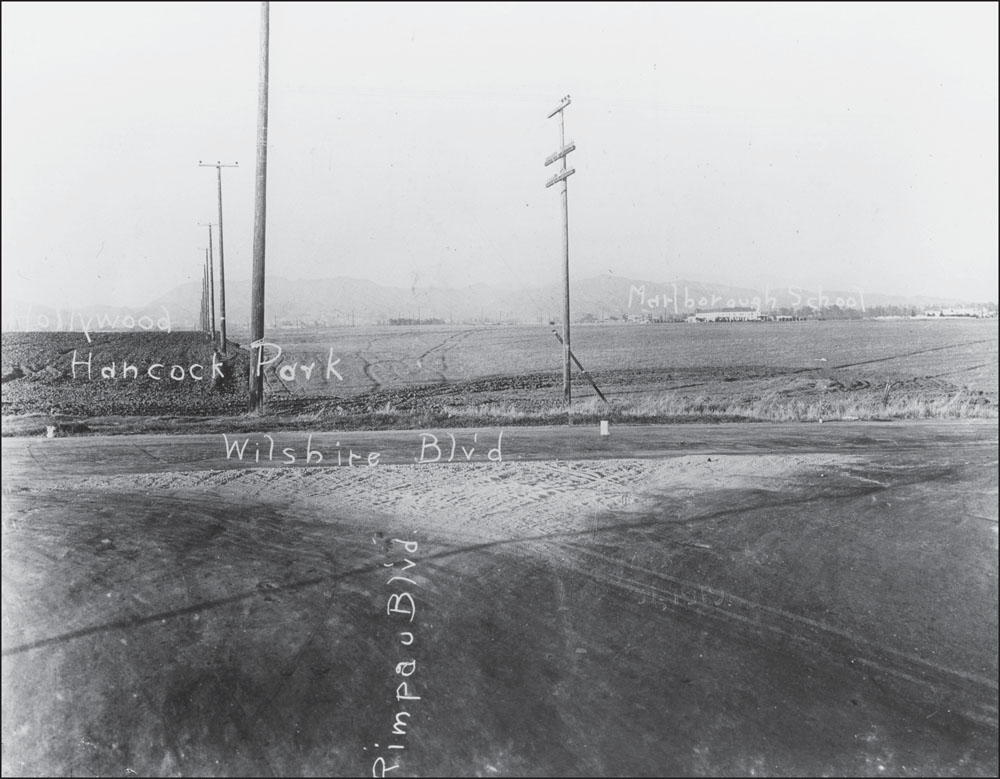
WILSHIRE AND RIMPAU BOULEVARDS, C. 1916. Mary Caswell, headmaster of Marlborough School, needed more space for the growing school. In 1916, she purchased land in the newly opened La Brea tract and built a new campus, surrounded only by bean and barley fields. Caswell knew the population of Los Angeles was slowly moving west. By the 1920s, much of this farmland would be developed into tree-lined streets with stately homes. G. Allan Hancock, for whom Hancock Park is named, would ultimately develop over 1,200 homes just north of Wilshire and west of Marlborough School. Windsor Square and Larchmont Village would take shape to the west of the school.
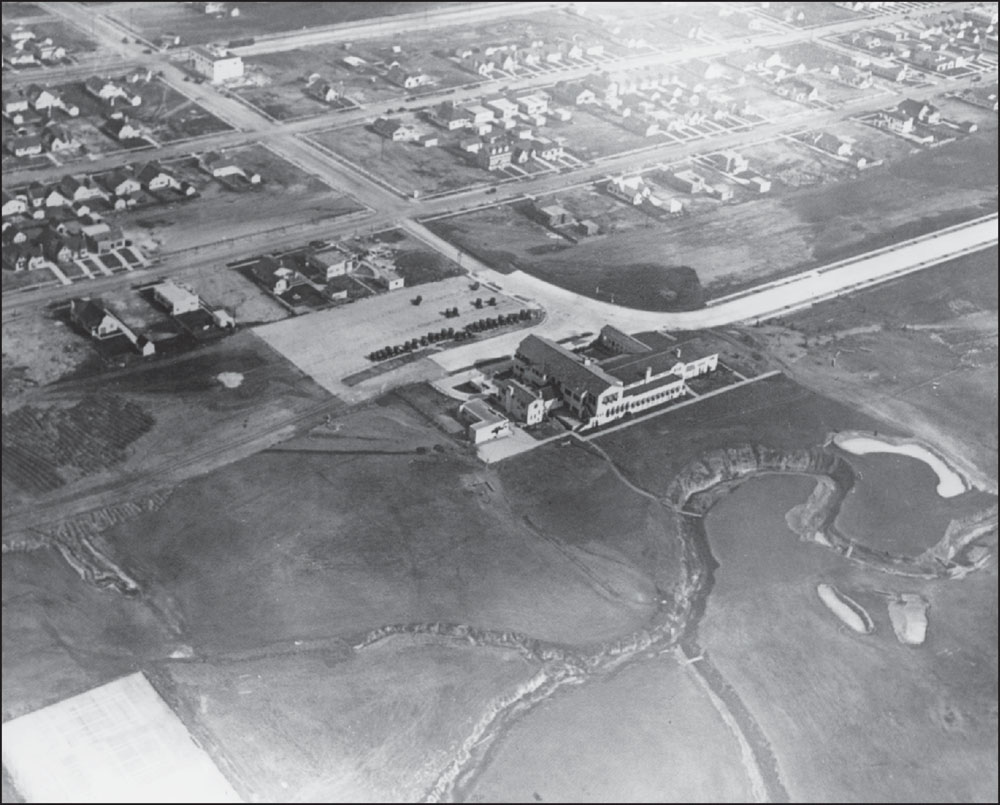
AERIAL VIEW OF WILSHIRE COUNTRY CLUB. Developer and philanthropist G. Allan Hancock leased 105 acres to the Wilshire Country Club after he inherited 440 acres from his father, Henry Hancock. In the 1920s, he subdivided the property from Rossmore to Highland Avenues, between Wilshire Boulevard and Melrose Avenue, into residential lots. Temple Street, whose name was changed to Beverly Boulevard in 1921, ends at the clubhouse and heads south. By 1924, plans were developing to create a great east/west artery—from the ocean to the heart of downtown—that would bisect the golf course on its way to what would later become Sunset Boulevard.
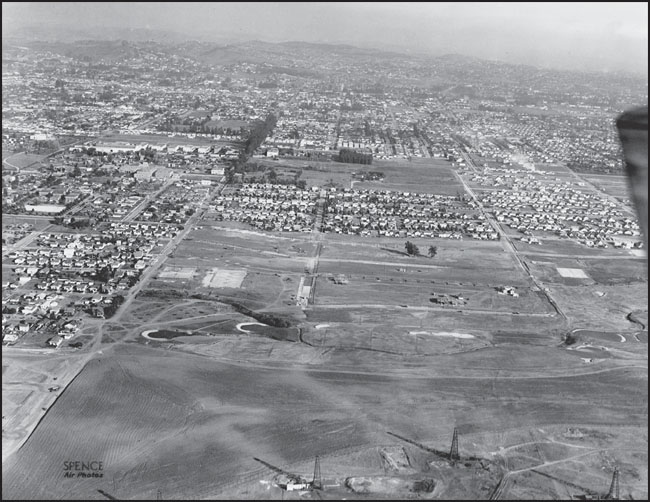
AERIAL VIEW OF MELROSE AVENUE LOOKING EAST, 1921. Los Angeles was spreading west, and the neighborhoods around Larchmont were taking shape. In the foreground are Alan Hancock’s oil fields, now the site of the La Brea Tar Pits and the Los Angeles County Museum of Art. The grove of trees is Melrose Avenue. (Courtesy of the UCLA Spence Air Photo Collection.)
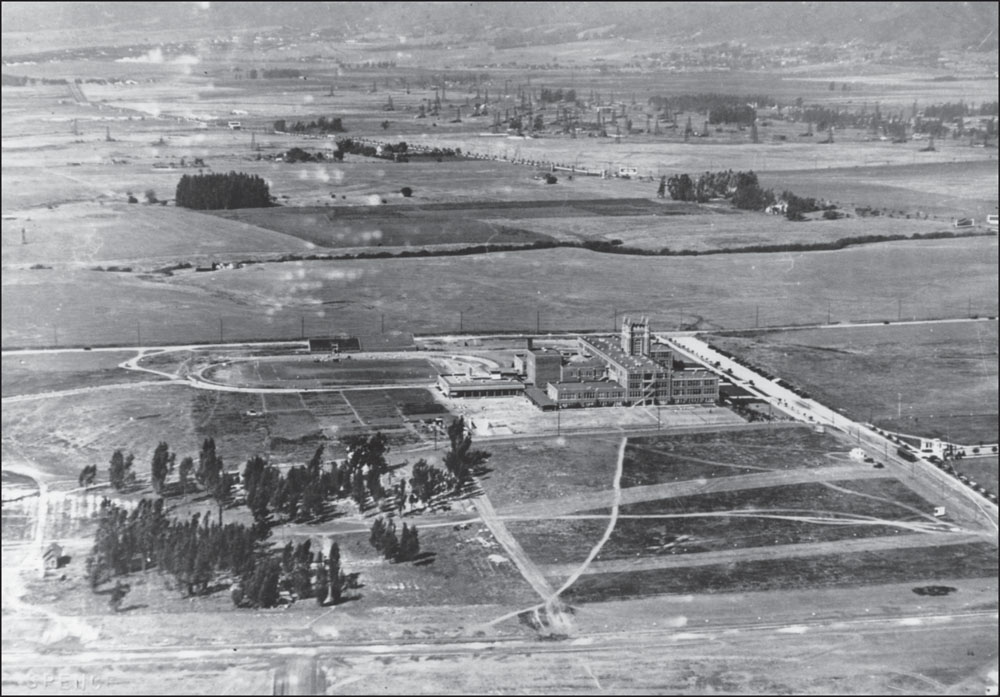
AERIAL PHOTOGRAPH OF LOS ANGELES HIGH SCHOOL, 1921. Founded in 1873, Los Angeles High School is the oldest public school in Southern California. The school moved from the corner of Rimpau and Olympic Boulevards to its current location in 1917 with 1,937 students. Olympic Boulevard was known as Tenth Street at the time of this photograph. The name was changed to commemorate the 1932 Summer Olympics that were held in Los Angeles. (Courtesy of Los Angeles High School.)
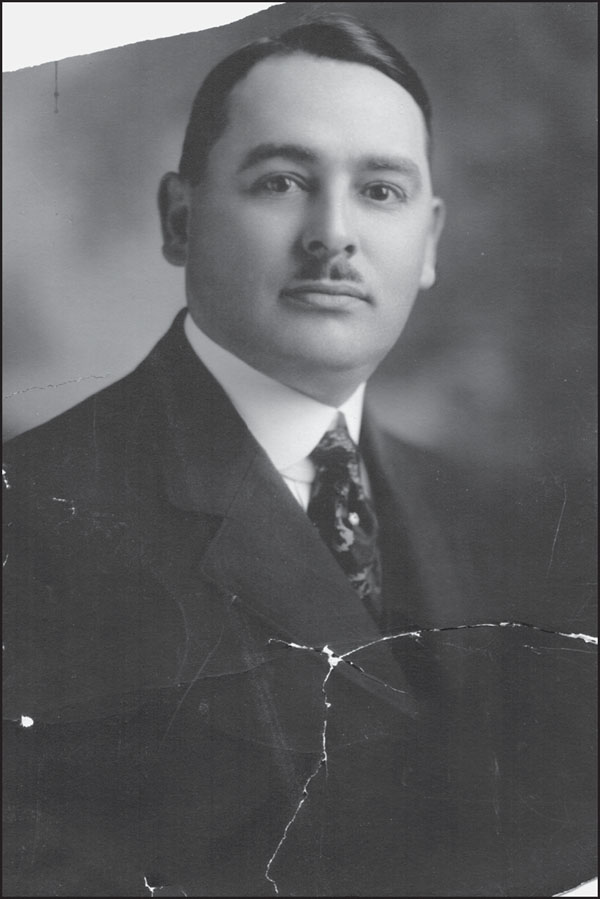
JULIUS J. LA BONTE, FATHER OF LARCHMONT BOULEVARD. Recognized as the “Father” of Larchmont, Julius La Bonte and his partner Charles Ramson retired from a successful business in Grand Rapids, Michigan, to Los Angeles. They purchased seven lots on Larchmont Boulevard in 1921. La Bonte, who built 70 percent of the structures on the street, is credited with creating the first neighborhood shopping street in the city that catered to the new neighborhoods of Windsor Square and Hancock Park. According to the Los Angeles Times, every store was leased before the buildings were finished.
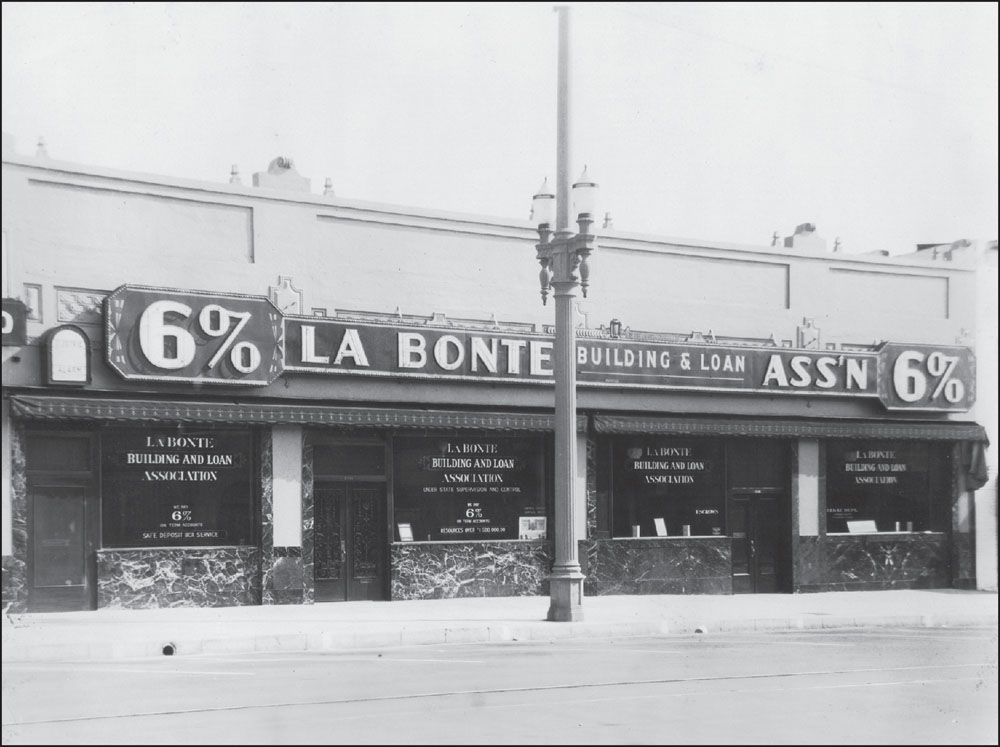
LA BONTE BUILDING AND LOAN ASSOCIATION. Julius La Bonte and Charles Ramson operated their real estate and banking business out of one of their buildings at 126–132 North Larchmont Boulevard. La Bonte served as president, and Ransom served as vice president. The bank’s safe is still in the location, now home of Chevalier’s Books.
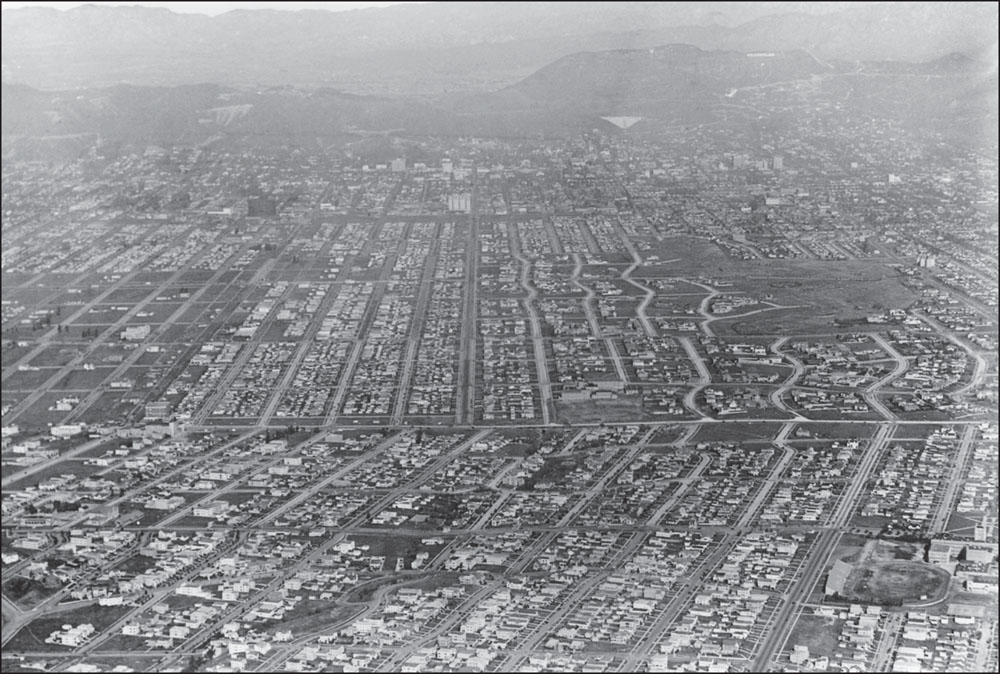
AERIAL PHOTOGRAPH LOOKING NORTH WITH HOLLYWOODLAND SIGN IN THE DISTANCE, LATE 1920S. The Los Angeles High School track and football stadium can be seen in the lower-right corner of the image, and nearby is the neighborhood of Brookside. Originally called Wilshire Crest, Brookside is bound by Olympic and Wilshire Boulevards and Rimpau and Highland Avenues and was developed with tree-lined streets and diverse 1920s-style architecture like other nearby neighborhoods of Hancock Park, Windsor Square, and Fremont Place. The large undeveloped area is the Wilshire Country Club. A number of large Hancock Park estates were not yet built at the time of this photograph. In the distance on Mount Lee, the Hollywoodland sign (later shorten to Hollywood in one of its several restorations) beckons prospective buyers to the subdivision in the hills, formerly citrus groves. The original sign was lit with thousands of lightbulbs and could be seen for miles. (Courtesy of Los Angeles High School.)
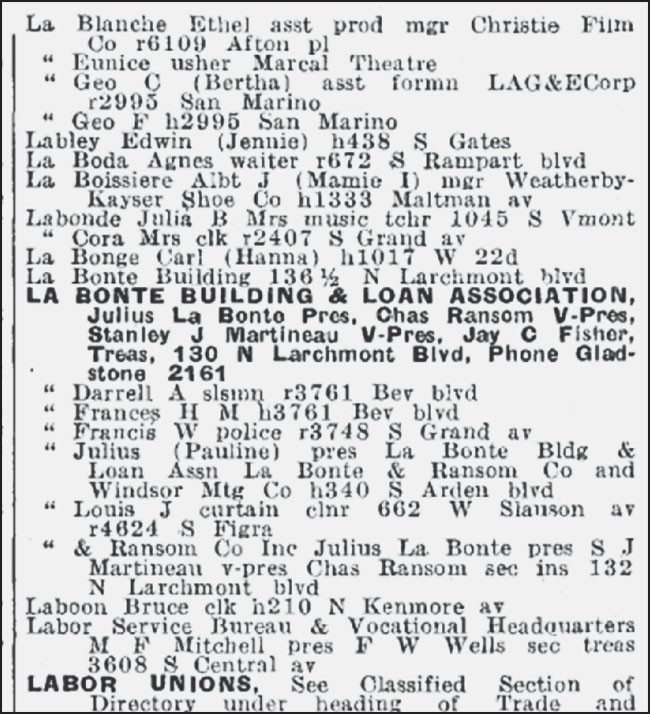
LOS ANGELES TELEPHONE DIRECTORY LISTING FOR LA BONTE BUILDING AND LOAN ASSOCIATION, 1929. The officers of the company and their titles are listed, along with Julius La Bonte’s wife, Pauline. In July 1923, the Los Angeles Times reported the real estate firm was celebrating its second anniversary with a staff of more than 50 salesmen, draftsmen, architects, and engineers. By 1930, the firm announced it was expanding its offices to an adjacent space north of its location at 132 North Larchmont Boulevard. (Courtesy of the Los Angeles telephone directory.)
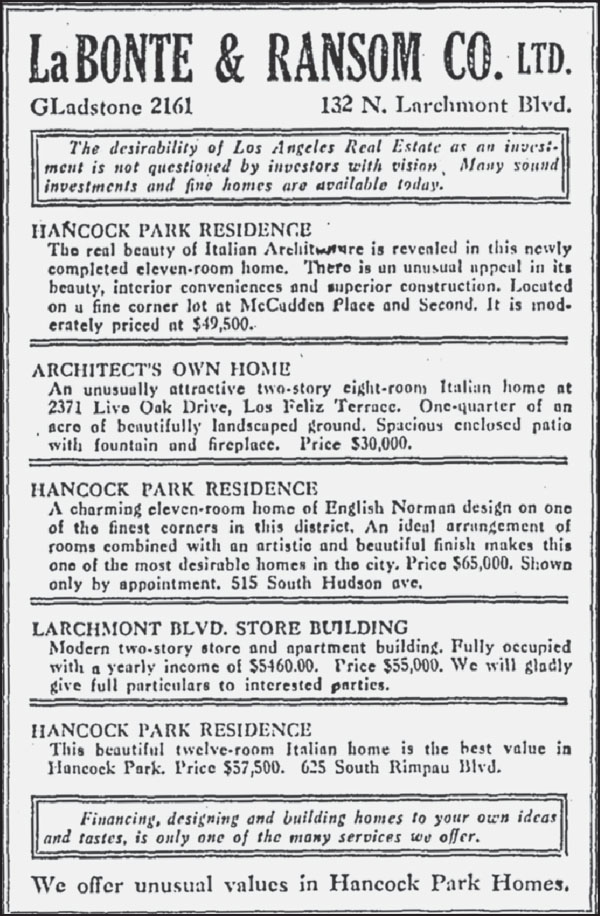
LA BONTE & RANSOM CO. LTD. LOS ANGELES TIMES DISPLAY ADVERTISEMENT. Serving as developers, bankers, and real estate brokers, Julius La Bonte and Charles Ramson successfully developed homes and commercial properties in the nearby vicinity, west of Western Avenue and between Melrose and Pico Avenues. This advertisement was in the Los Angeles Times in 1930.

NEW BUSINESS CENTER GROWS. On September 25, 1921, The Los Angeles Times reported that a new business district was planned for Larchmont Boulevard between First Street and Beverly Boulevard. The stores were said to be “attractive . . . the building will be of colored pressed brick embellished with ornamental stucco work and . . . will be furnished with modern mercantile conveniences.” The lower building depicted above is a motion picture theater of Mission Revival design, made with reinforced concrete and featuring modern acoustics and ventilation. The theater seated almost 900 people and featured a magnificent $40,000 organ. In addition, there was a “large, carefully selected string orchestra.” (Both, courtesy of the Los Angeles Times.)
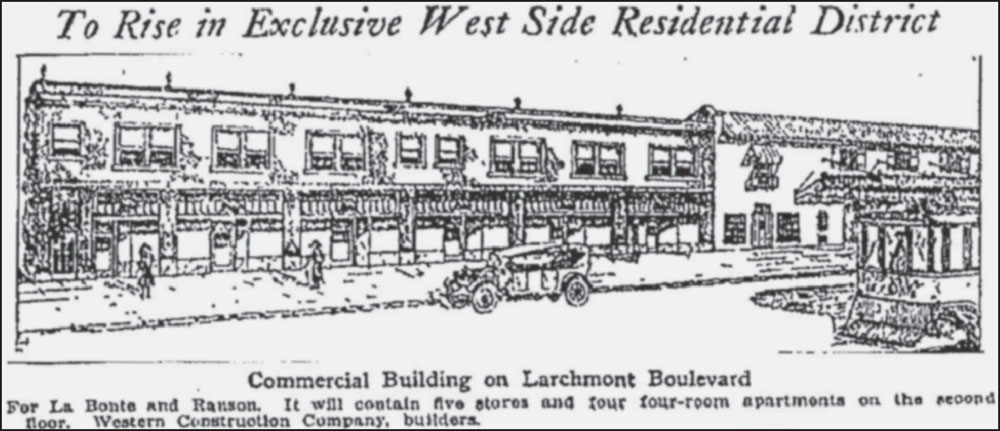
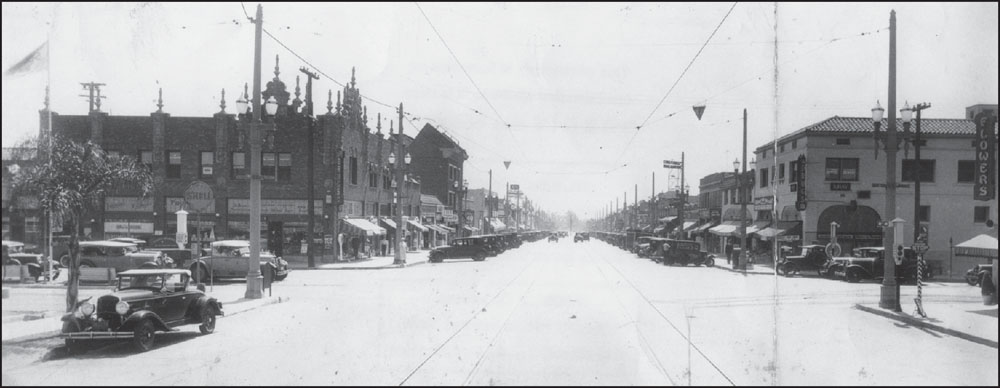
LARCHMONT BOULEVARD AT BEVERLY BOULEVARD LOOKING SOUTH, C. 1920. Real estate developers Julius La Bonte and Charles Ramson purchased seven lots on Larchmont Boulevard to create a business district of 30 stores between First Street and Beverly Boulevard. Jack Lipson, whose collection this photograph is from, was the son-in-law of La Bonte, having married Charlotte La Bonte. According to notes on the back, this photograph was part of the historical collections of Security Pacific National Bank and was marked “Hollywood Street, Larchmont Boulevard at Beverly Boulevard 1930s.” (Both, courtesy of the Larchmont Chronicle from the Jack Lipson Collection.)
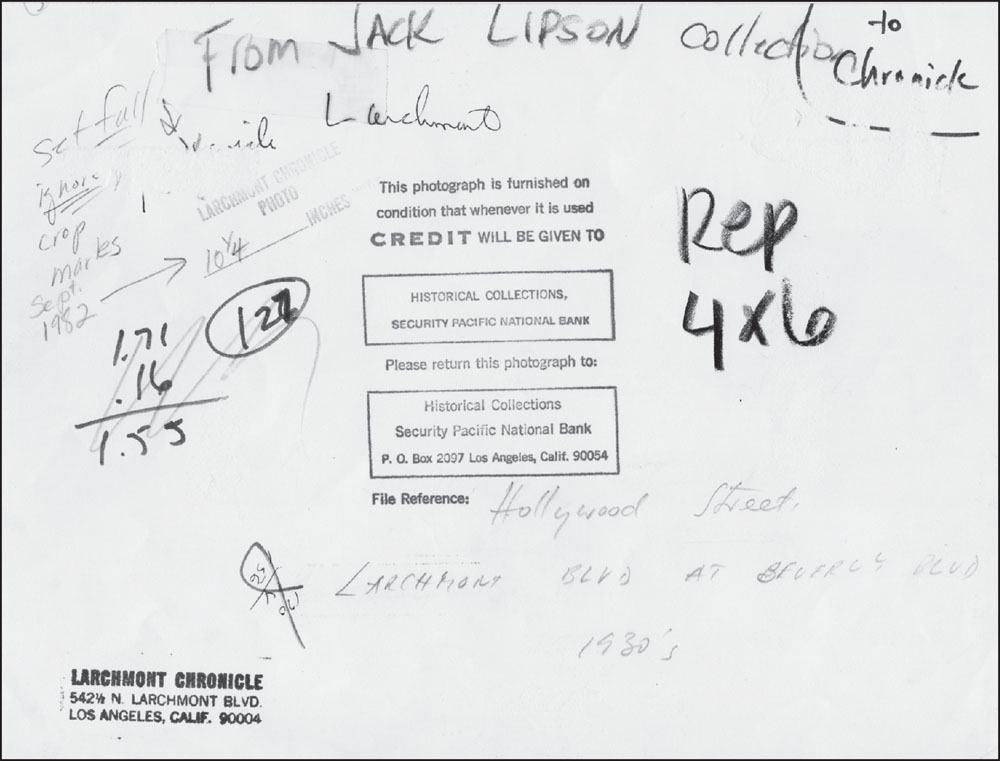
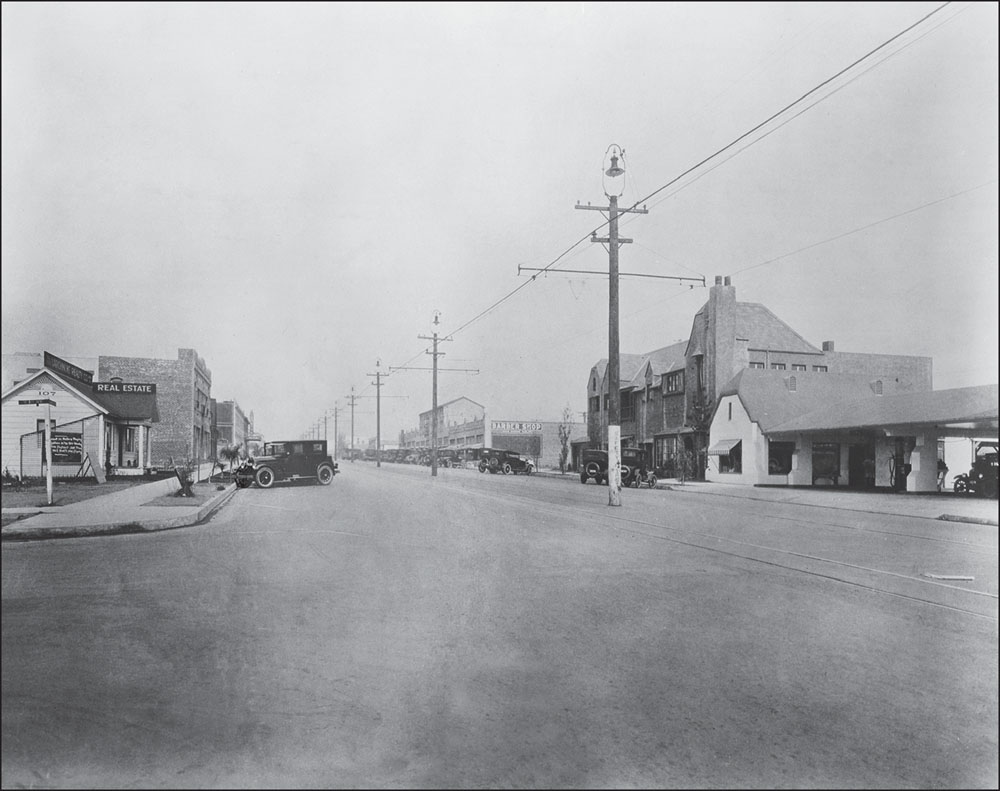
LARCHMONT BOULEVARD AT FIRST STREET LOOKING NORTH, C. 1920. This early photograph of Larchmont Boulevard was taken before all the stores were built. In 1922, Ben T. Cossart received a building permit to construct a real estate office for Larchmont Realty Company at 107 Larchmont. B.T. Cossart and J.P. Smith are listed in the 1923 Los Angeles telephone directory doing business at 107 North Larchmont.
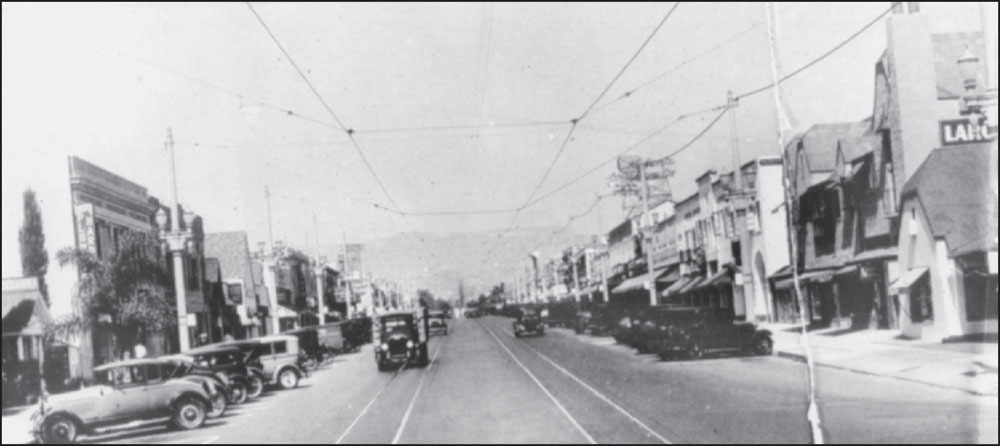
LARCHMONT BOULEVARD AT FIRST STREET LOOKING NORTH. This is a street view of Larchmont Boulevard from the 1920s. The street featured angled parking for easy access to shopping. The Yellow Car rail line, developed in 1911, offered convenient shopping for residents of nearby Windsor Square who did not want to go to Western Avenue or ride downtown. The Los Angeles Times speculated that the new shopping district would rival nearby Western Avenue by offering unique shops with “no duplication of mercantile establishments.”
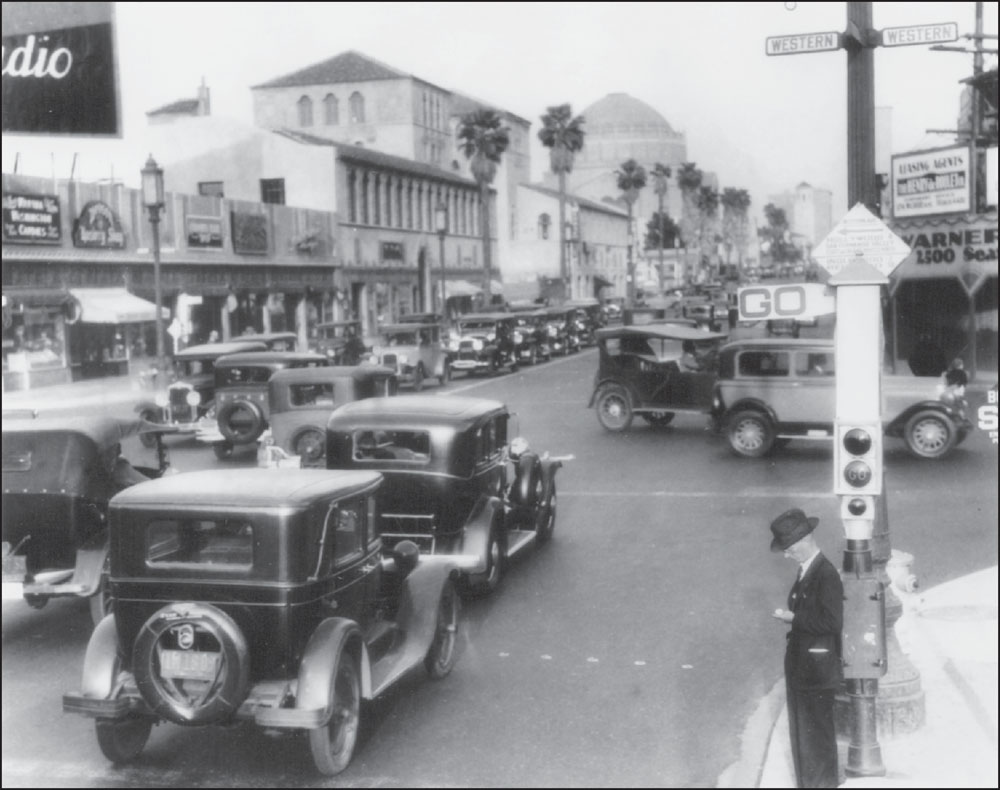
WILSHIRE BOULEVARD AND WESTERN AVENUE. This was considered one of the busiest intersections in the nation. Wilshire Boulevard Temple, a reform congregation that catered to the movie industry, can is visible at left (with the domed roof).
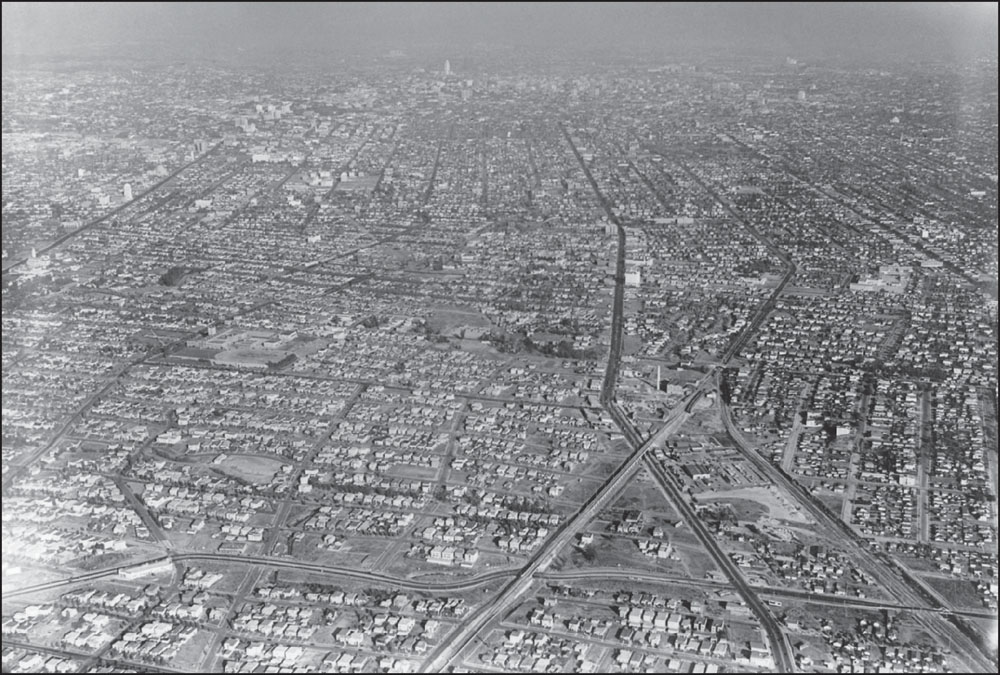
AERIAL VIEW LOOKING EAST, LATE 1920S. Los Angeles High School is shown in the middle left of the photograph. Los Angeles City Hall can be seen off in the distance. By the end of the 1920s, much of the city had been expanded, starting from historic downtown and extending to the west. (Courtesy of Los Angeles High School.)
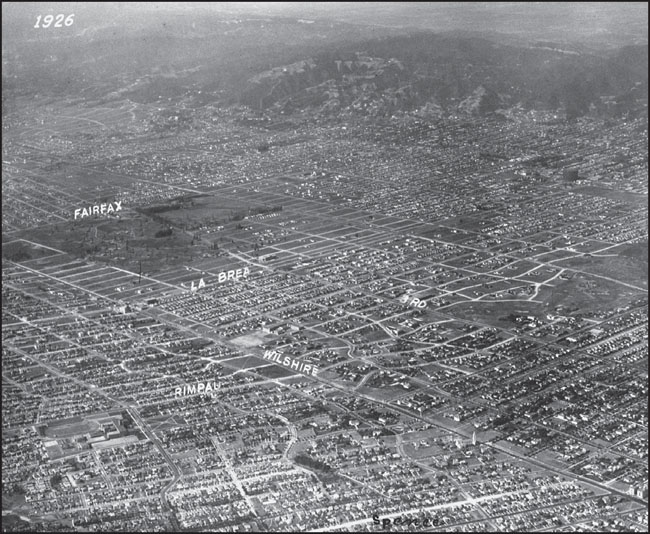
AERIAL VIEW OF RIMPAU AND WILSHIRE BOULEVARDS, 1926. The neighborhoods along Wilshire Boulevard were rapidly growing, providing many customers for Larchmont Boulevard merchants. This photograph shows the neighborhoods of La Brea, Hancock, Brookside, Windsor Village, Wilshire Park, and Windsor Square. The curving streets of Fremont Place (south of Wilshire) and Hancock Park (north of Wilshire) still had many vacant lots. (Courtesy of the UCLA Spence Air Photo Collection.)

SANBORN MAP OF LARCHMONT BOULEVARD BUSINESS DISTRICT, 1928. Originally created to assess fire insurance liability in US cities, Sanborn maps provide detailed information about each building and its occupancy. This is a photograph composite of the map in the Los Angeles Public Library collection. Many of the buildings shown here are still in use on Larchmont Boulevard today, with the notable exception of the two gas stations and the movie theater.
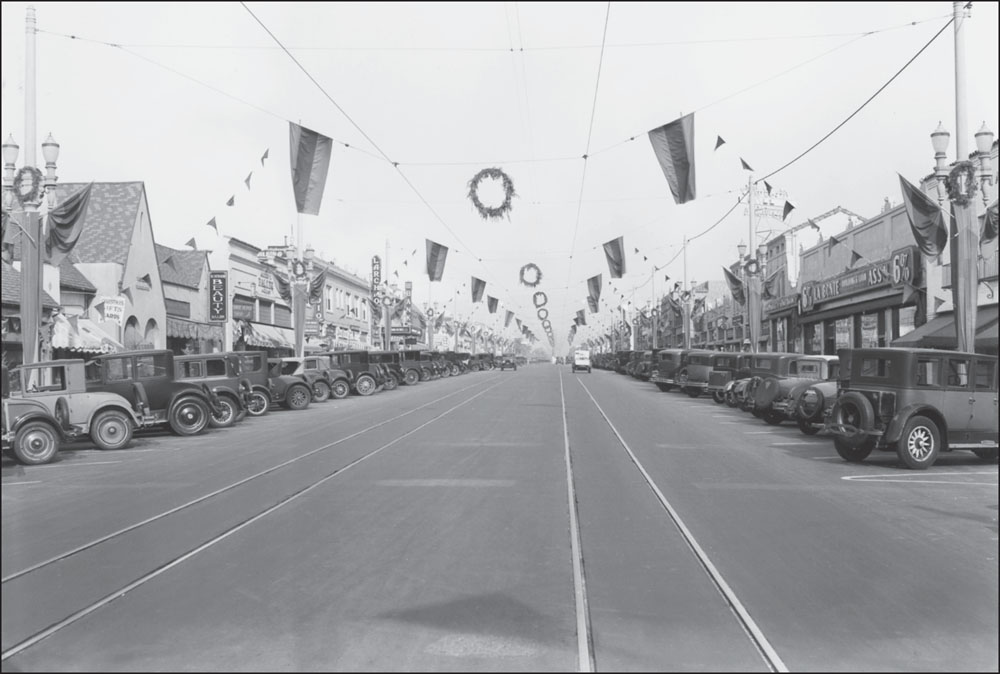
LARCHMONT BOULEVARD LOOKING SOUTH TOWARD THIRD STREET, 1929. Larchmont Boulevard was a busy mercantile street in very short order, with most construction taking place in six short years. This photograph shows the angled parking spaces, offering easy access and convenience for shoppers. The street is also decorated for the holiday season, with banners and wreaths suspended from the railway lines. (Courtesy of Marc Wanamaker at Bison Archives.)

108–110 LARCHMONT BOULEVARD, 1923. Early tenants on Larchmont included the offices of Wilshire Studios. The 1929 Los Angeles telephone directory listed the upholstery company at 108 North Larchmont Boulevard. This building no longer stands. (Courtesy of Marc Wanamaker at Bison Archives.)
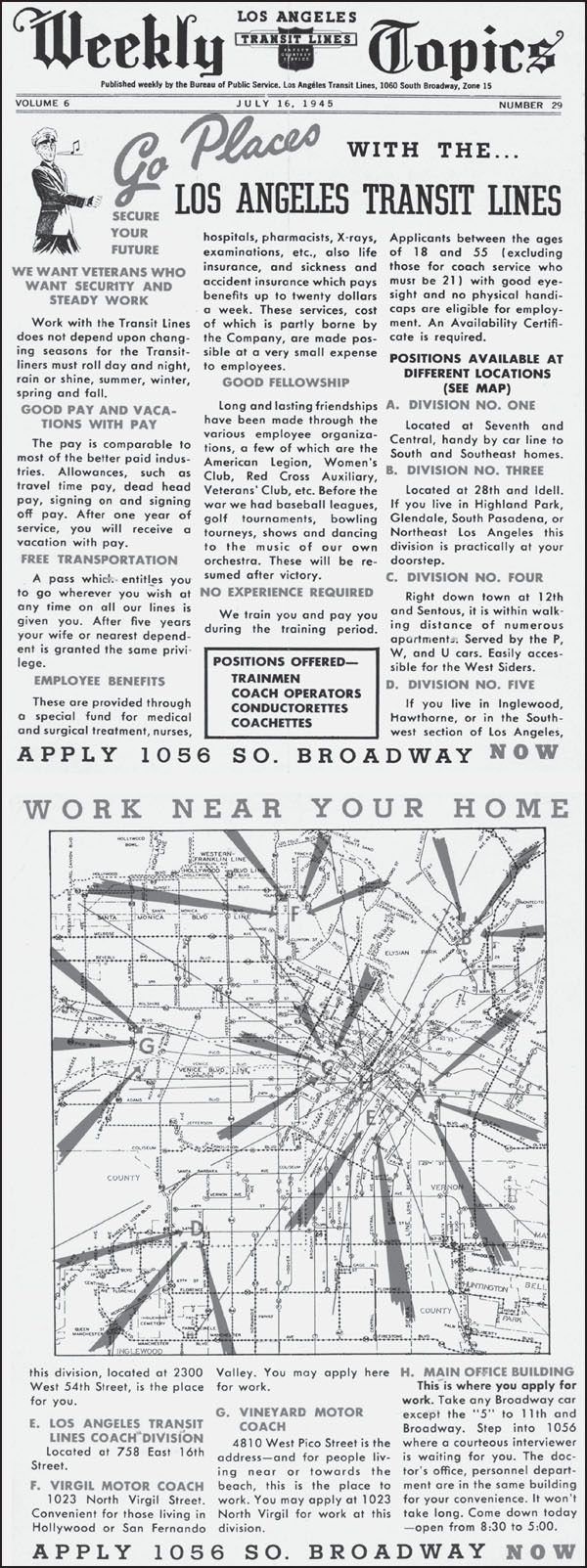
MAP OF THE SERVICE AREA OF THE LOS ANGELES RAILWAY. The Pacific Electric Railway provided a network of rail lines, enabling Los Angelenos to travel all over their growing city. It was a great boon to Larchmont, bringing shoppers and customers to local businesses. It helped create one of the most enduring pedestrian shopping streets in the city.
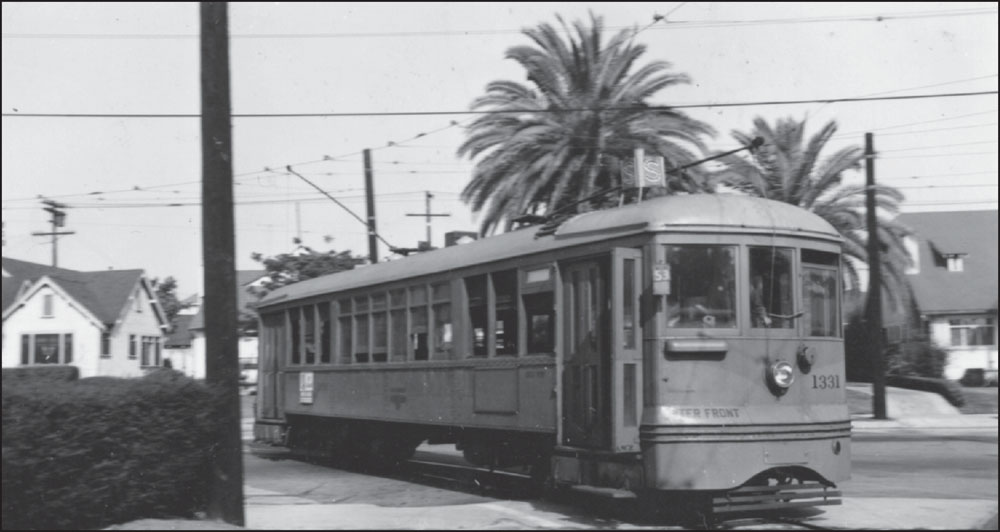
LARY S LINE RAILCAR. The Los Angeles Railway served the city proper, and the S Line was one of the lines that operated along west Third Street and Larchmont Boulevard. The tracks were laid to carry people up Larchmont to the Hollywood Mineral Hot Springs at 5626 Melrose Avenue.
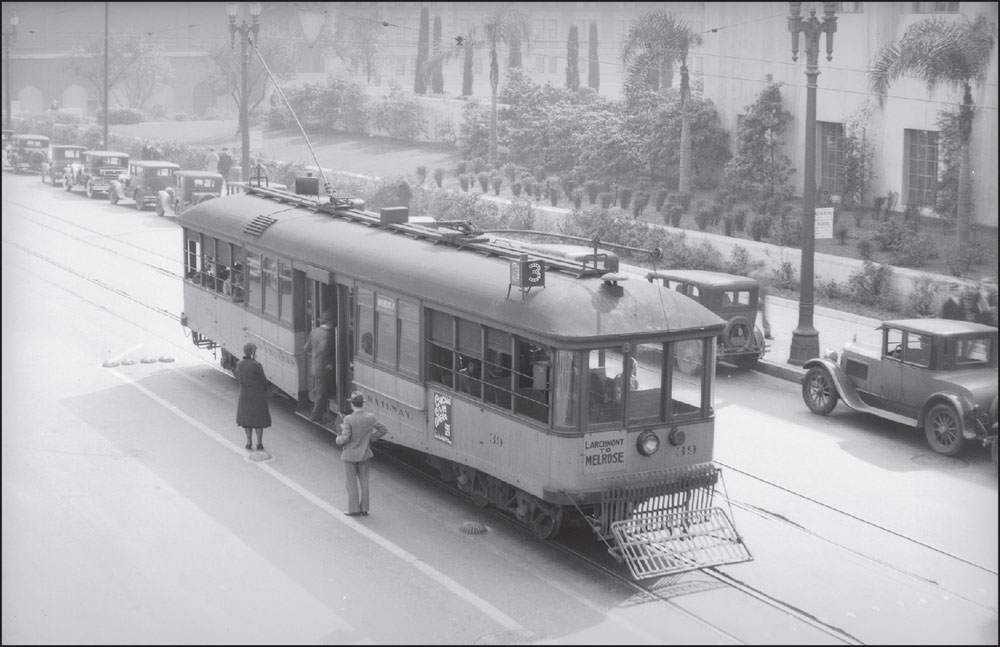
LARCHMONT TO MELROSE CABLE CAR, 1932. This photograph is of men and women entering the Larchmont to Melrose cable car. By 1948, the S Line was replaced with the LARY 3 Line. The rail service had gone as far west as La Brea Avenue. According to Pacific Electric, “Rail service along West Third Street past Wilton Place and up Larchmont Boulevard was now operated as the R line. The rail service along Larchmont Boulevard was unique in that the trolley wire center poles were left in place in the pavement after the private right of way along the boulevard was paved over. The lower portion of the poles were painted silver with black stripes in an effort to keep LA motorists from crashing into them.” (Courtesy of Dick Whittington Studio/Corbis.)
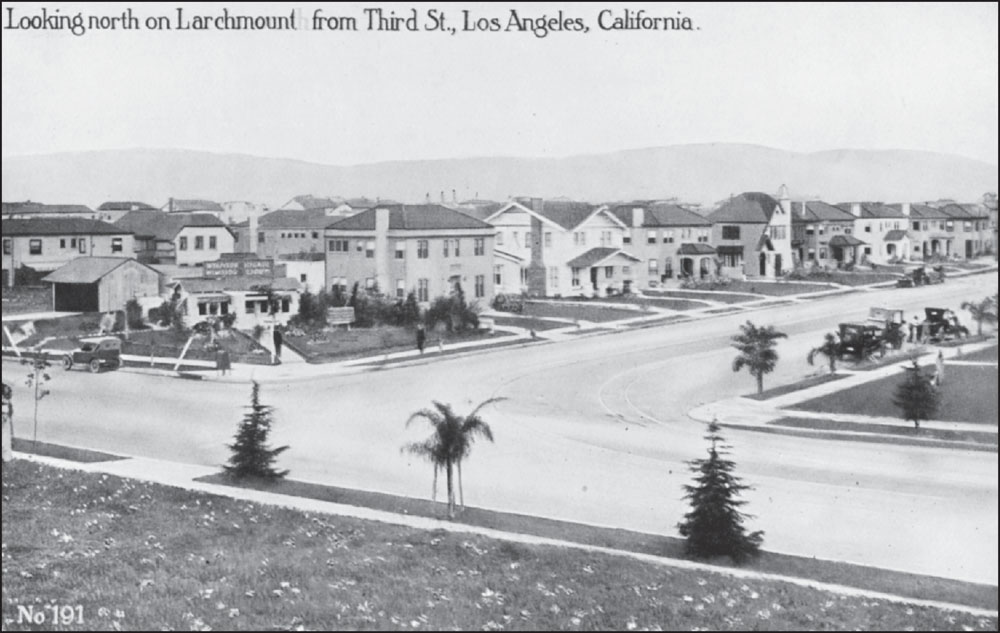
SOUVENIR POSTCARD OF LARCHMONT, C. 1930. This picturesque view of Larchmont is looking north from Third Street. The idealized neighborhood perspective has softened the railway tracks turning up Larchmont Boulevard.
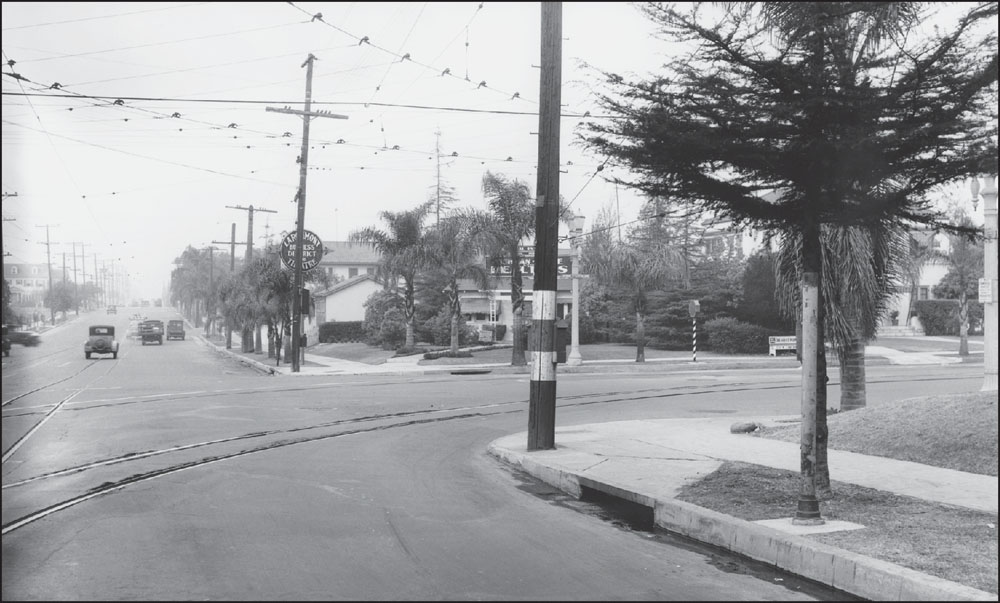
LARCHMONT BOULEVARD AND THIRD STREET. This photograph shows a street view of Third Street turning north on Larchmont Boulevard. The Larchmont business district and theater sign is next to the original real estate office of La Bonte and Ramson. In this photograph, it is the office for the Larchmont Tract, operated by Shoults and Company at 269 South Larchmont. It later became the Wilshire YMCA until relocating to 225 South Oxford Street in 1964. (Courtesy of Marc Wanamaker at Bison Archives.)
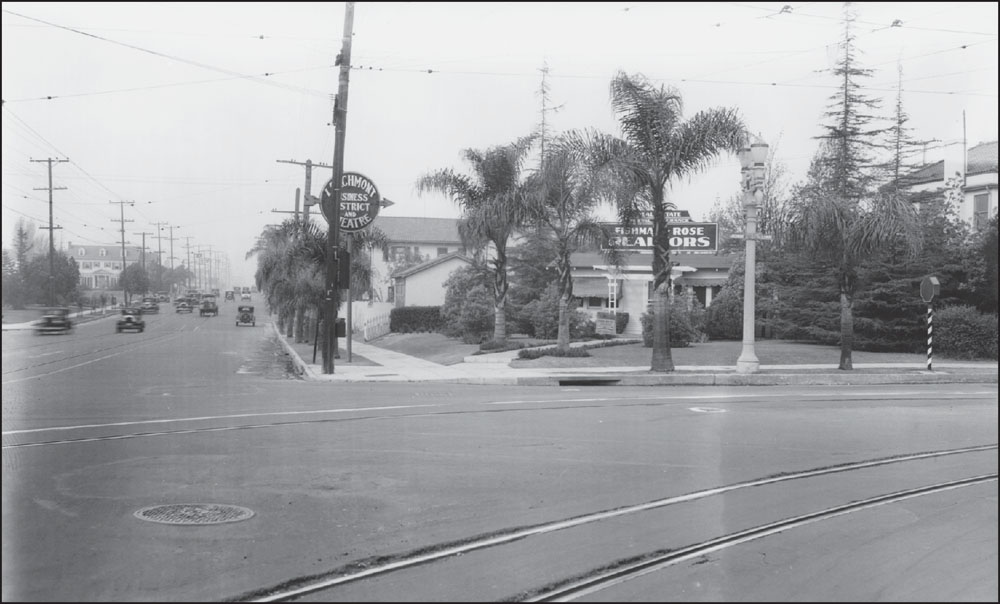
NORTHWEST CORNER OF THIRD STREET AND LARCHMONT BOULEVARD, 1932. Here is a view turning north on Larchmont Boulevard from Third Street. Rail tracks are visible on both thoroughfares. (Courtesy of Marc Wanamaker at Bison Archives.)
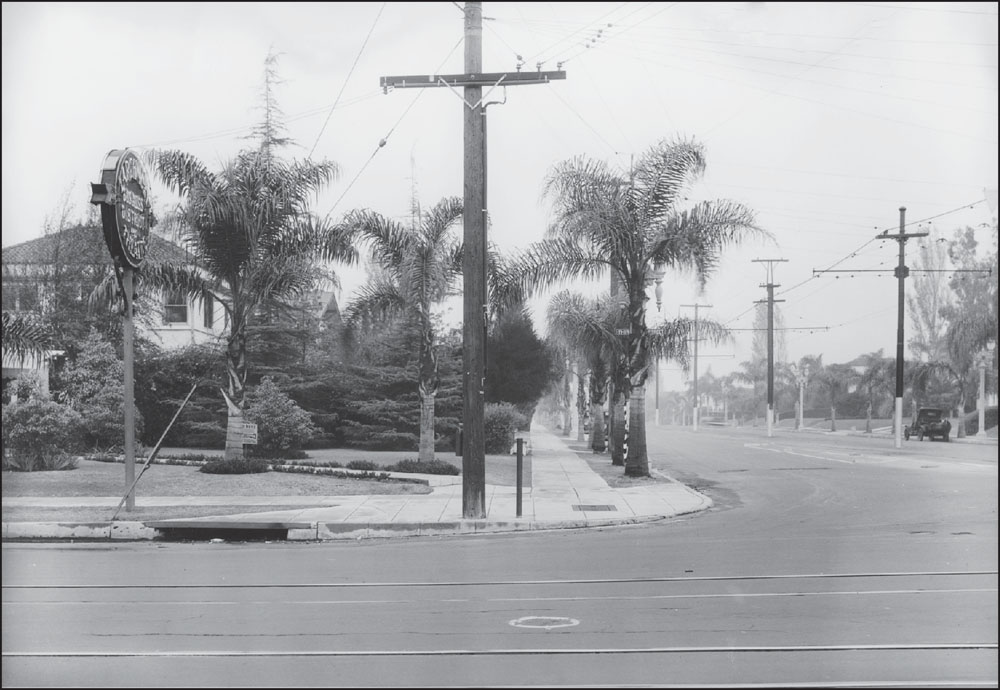
ANOTHER CORNER VIEW, 1932. This photograph was taken from the southwest side of the intersection. It shows a closer view of the Larchmont business district and theater sign and the railway poles in the center of Larchmont Boulevard. Also shown are the palm trees planted in the parkways lining both sides of the street. (Courtesy of Marc Wanamaker at Bison Archives.)
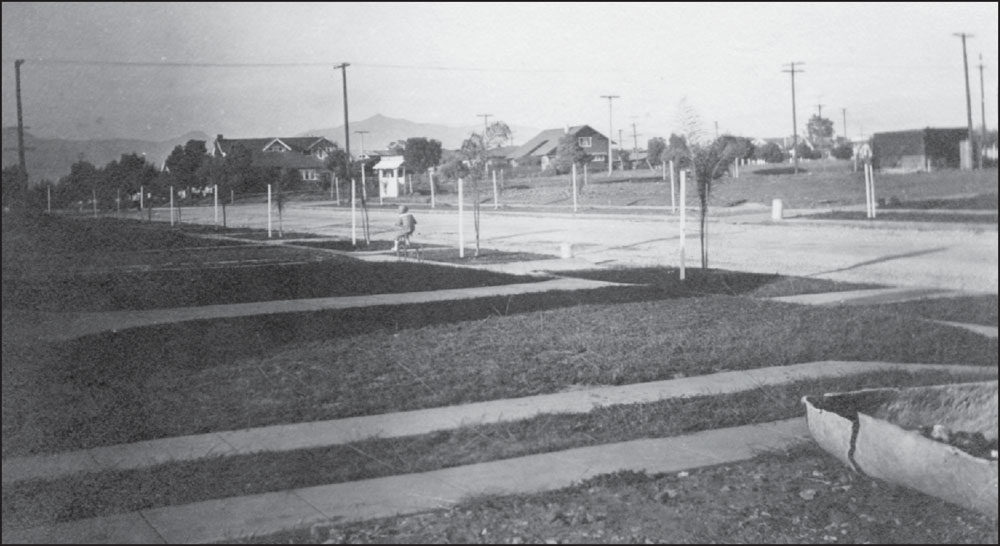
PHOTOGRAPH OF NEIGHBORHOOD, 1920S. This is an early image of a child riding a three-wheeled bike on the sidewalks of the yet undeveloped neighborhoods around Larchmont Boulevard. Also visible are recently planted, young palm trees.
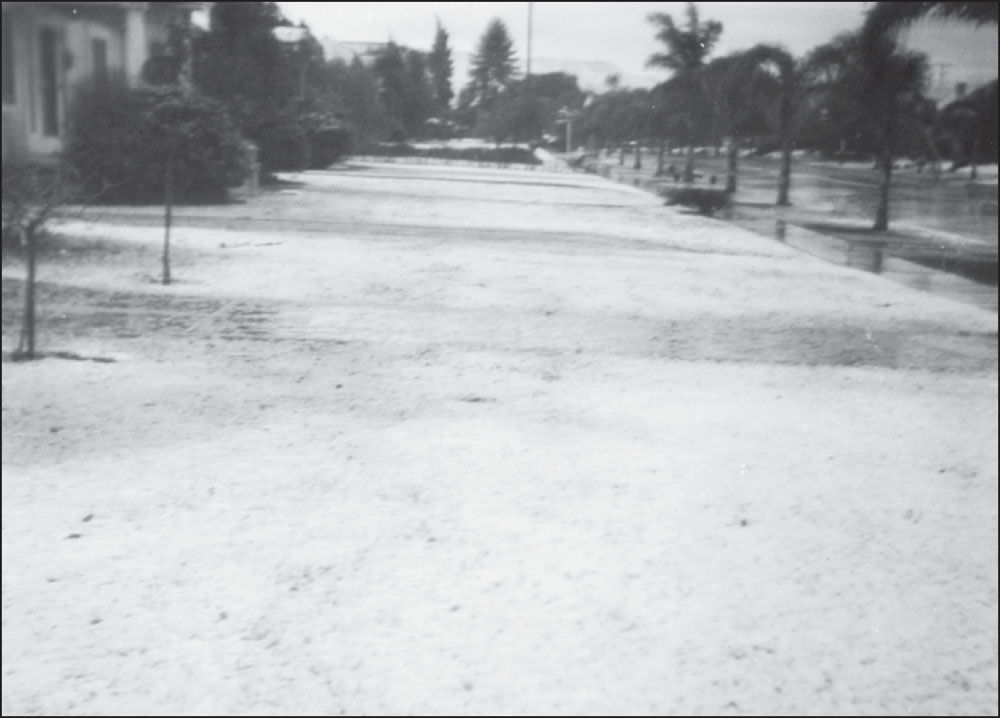
SNOW ON LARCHMONT AREA LAWNS, JANUARY 1932. Snow began to fall around 5 a.m. on the morning of January 15, 1932, according to the Los Angeles Times. Residents awoke to find two inches of snow covering their lawns. This was the first record of snow in the 56-year history of the city’s bureau. Snow fell in downtown Los Angeles, Hollywood, and Westwood, where UCLA students made snowballs and enjoyed a snow day.

LARCHMONT AND FIRST STREET LOOKING NORTH. By the 1930s, the Larchmont business district was built out. In 1924, 101–103–105 North Larchmont Boulevard was built of brick on the northwest corner. On the opposite side of the street is Larchmont Motor Service station, which sold Richfield gasoline. Streetlights attached to the railway, power poles, power lines, and streetcar tracks can also be seen.
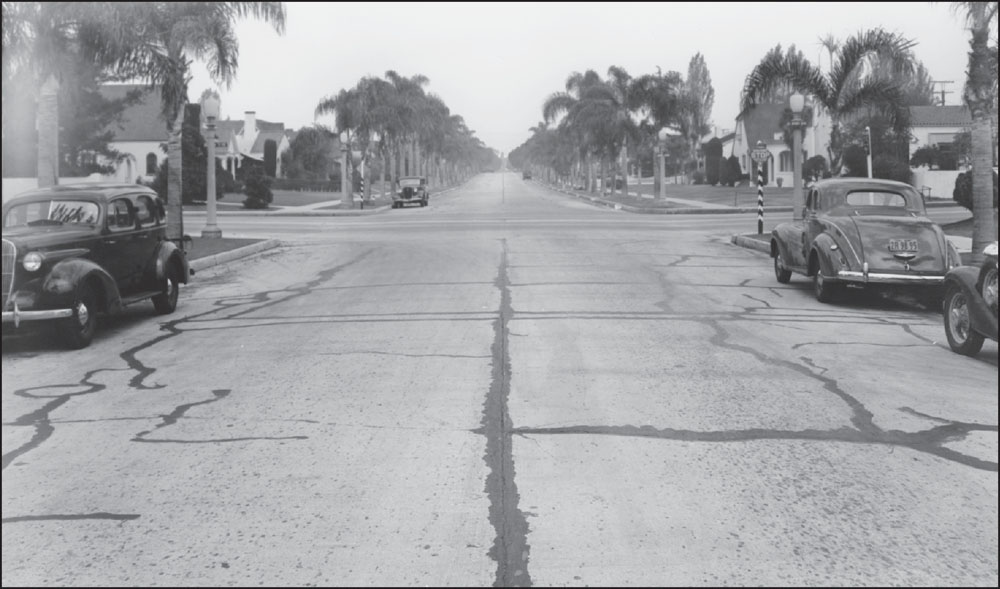
BEVERLY BOULEVARD AND LUCERNE STREET, 1938. Pictured is the intersection of Beverly Boulevard (the cross street) and Lucerne Boulevard in 1938. This photograph shows the concrete streets and homes in the neighborhood just one block west of Larchmont Boulevard. (Courtesy of Marc Wanamaker at Bison Archives.)
































